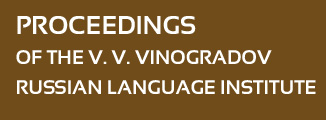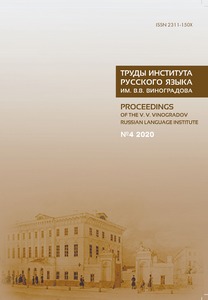SEMANTIC-WORD-FORMATING DESCRIPTION OF DERIVATIVES WITH UNIQUE SUFFIXES IN THE HISTORY OF THE RUSSIAN LANGUAGE IΙ
Abstract:
The article is devoted to the description of word-formation types with non-productive suffi xes in their lexical implementation in the history of the Russian language from the 10th century to the present. To speak more precisely and fi guratively, we should resort to the terminology of V. V. Vinogradov, who calls such suffixal formants “half-dead” and even “dead” due to their inability to participate in the reproduction of similar derivatives [Vinogradov 1972: 93, 108, 111]. In works on word formation, such suffixal formants are usually called unique — they are not included in the basic list of derivative means. The de scribed derivatives are studied from the point of view of their origin and usage throughout the history of the language, as well as their word-formation potential and relation to the book-written, folk-spoken or dialectal type of language. A fairly detailed description of the derivative лоно (womb) is given for the fi rst time in Russian historical lexicology.


